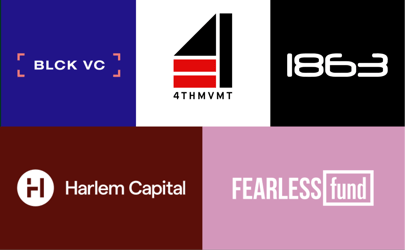In today’s competitive job market where top talent is hard to find and even harder to secure, it’s essential to ensure your job postings stand out and effectively capture the caliber of unique talent you need.
A well-crafted job description gives potential candidates a clear sense of what the job entails, the qualifications you’re looking for, and what sets your organization apart from the competition.
Besides these basics, a good job description can be the very thing that helps you find and land the game-changing CXO or leader you need to take your business to the next level.
Unfortunately, it’s reported that 43% of job descriptions don’t accurately reflect the role. In addition, job seekers are often hesitant to waste time applying to jobs with long lists of specific requirements that they don’t fully meet. Yet the majority of employers say that candidates only need to meet 70% of those requirements to be considered.
So, why the disconnect? Why are job descriptions so essential to get right in the search for top talent? And how do you write an accurate job description that captures the best talent’s attention and entices them to apply?
Keep reading to find out.
Hunt Club specializes in sourcing hard-to-reach executives through a powerful combination of trusted introductions and cutting-edge technology. Get started to learn more.
Why Is Having a Good Job Description Even Important?
A job description is much more than a list of required skills and duties potential candidates are expected to perform. A job description is one of the first signals your organization sends to leaders — leaders that have the potential to transform your entire organization.
A job description should provide details on the duties and responsibilities, qualifications, desired experience, and benefits of working for your organization. It should be as specific as possible because this will give potential job candidates an accurate view of the part they’ll play in everyone’s success.
Here are a few other top reasons why an effective job description is critical.
Attracts Top Talent
We can’t drive this point home enough.
A well-written job description helps you attract the top talent you need. If the description is clear and concise, it makes it easier for potential candidates to determine if the job is right for them, and apply.
The best talent can actively recognize the effort put into job descriptions, and if your job description is lacking, they may view that as a reflection of the care that goes into them.
Narrows Down the Pipeline To Be As Relevant and Helpful As Possible
Conversely, a detailed description can also help you narrow down the pool of applicants and identify candidates who do have the right qualifications and skills. Descriptions serve as a reference point for applicants to see if they’re a good fit and help employers ensure everyone is on the same page regarding expectations.
With an extremely detailed description, candidates can accurately assess whether or not they’re a good fit, and it can help your hiring managers keep their pipelines concise, tailored, and hyper-relevant.
Makes a Good First Impression (Yes, They Count)
First impressions go a long way, and this is especially true in the quest for the best talent.
Your job description is one of the very first (and one of the most influential) impressions a job seeker and potential team leader will have about your organization. And depending on how it’s crafted, has the power to draw in or ward away some incredibly impactful players.
These are the same players with the potential to unlock innovation and take a business to new heights.
Sets Clear Expectations For Candidates
A good job description helps set expectations for the hiring manager and the candidate during the interview process and beyond.
Ensure that your job description includes all the important information about the position, such as:
- Duties and responsibilities
- Required qualifications
- Relevant experience (both required and preferred)
- The salary range
- Benefits package(s)
- Work type (full or part-time; on-site, remote, or hybrid)
- A description of the company culture
This information can help both parties better understand what will be expected of the candidate in terms of skills, certifications, years of experience, and duties.
It also helps to create a clearer picture for the candidate of how the job will further the company’s mission and goals. Including details about the company culture and any unique benefits or perks can go a long way in setting expectations for new hires.
It also helps them determine your organization’s overall values and whether or not they want to be a part of them.
How To Write a Good Job Description + The Key Ingredients To Include
With so much at stake with a job description, it’s critical to get it right. When crafting your job description for a specific role, ensure potential applicants understand the responsibilities and what to expect if they’re eventually hired. Here are some details you should include in your job posting:
The Job Title
This one is self-explanatory but can sometimes fall in between the cracks. Always make sure you include a hyper-specific job title in your description.
The job title is often the first thing potential applicants see and should accurately reflect the position they’ll get hired to do. Include things like:
- One to four words that provide a concise yet descriptive summary of the role (e.g., Director of Content, VP of Engineering, Chief of Staff).
- The level of seniority, if applicable.
- The department, if applicable.
Go the extra mile: Use other relevant keywords to improve searchability and increase your chances of attracting top talent. For example, if the position is for a “Marketing Manager,” you should include keywords like “digital marketing” or “social media” to make the job title stand out.
A Comprehensive Role Summary
The role summary is a brief paragraph or two about the open role. It often appears before the lists of duties and requirements. In it, you can:
- Summarize the purpose of the role and its responsibilities.
- Provide the traditional definition of the role (and your company’s unique take on it).
- Describe the general skills, competencies, or experience necessary for successful performance.
- Explore the departmental and/or organizational vision for the role.
When writing the summary, be sure to include any qualifications, certifications, or licenses that are required for the job. You should also list any special considerations, such as the amount of travel or expected schedule.
Also, don’t forget the impact the role has on the organization. Be sure to highlight how the role contributes towards achieving the company’s desired objectives. Keep in mind that you want to attract the best candidates, so you need to give them a reason to choose you over your competitors.
Specific Duties and Responsibilities Using Action Verbs and Metrics
In your job description, provide a comprehensive list of the main job duties and responsibilities associated with the role.
Keep the job responsibilities concise yet descriptive. This means quantifying some of the role’s goals with metrics they’d be expected to meet and using action verbs to describe each task.
For example, when hiring for a marketing role, instead of writing “makes sales calls,” you can say, “generates X number of leads a month and close sales over the phone or during in-person meetings.” Even a small change like this communicates more detailed information that candidates look for.
Don’t forget: Be sure to include standard responsibilities you expect employees to take on as part of their everyday function, such as attending meetings or client-related events.
Must-Have & Nice-To-Have Qualifications For the Role
Determine the experience and education that would make someone an ideal candidate for the role, then outline the essential qualifications and skills required to perform the job successfully. This can include degrees, certifications, technical skills, and experience in a similar role.
Specify any soft skills the candidate should possess as well, such as problem-solving, organizational abilities, communication skills, or customer service experience. However, you should always aim to differentiate between required and preferred qualifications so you don’t leave out any candidates who think they must have every single qualification in order to be considered.
Required Qualifications
Required qualifications are mandatory. A potential candidate must have them to be considered for the role. For example, if the role requires a specific degree or certification, list it in the description.
Additionally, be sure to highlight any non-negotiable prerequisites, such as needing a valid driver’s license or passing a background check.
Preferred Qualifications
Preferred qualifications are not mandatory but are nice to have. They make a candidate more competitive. For example, when hiring for a tech talent role, a candidate may need four years of college-level education, but preferred qualifications could include:
- Certain tech certifications, like Amazon Web Services (AWS), Cloud Practitioner certifications, or CompTIA Security+ certifications.
- Knowledge of specific programming languages, like Python, C++, and Javascript.
By separating preferred qualifications from required ones, you will increase applications from candidates who may be more than qualified for the role but don’t tick every box.
Equal opportunity: Besides the qualifications, you can also state that the job is open to all suitably qualified applicants regardless of race, religion, sex, age, or disability — in line with equal opportunity legislation. This will ensure you attract the best possible talent from diverse backgrounds and boost your company’s brand.
Working Conditions
When creating a compelling job description, you should describe the work environment and conditions of the job. This helps applicants assess whether they can fulfill the requirements of the role on a logistical and physical basis.
Examples of working conditions include:
- Workplace flexibility (remote or hybrid options)
- Workplace schedule and hours (days of the week; part-time or full-time)
- Required overtime and related policies
- Required travel
- Any required physical labor
- Any hazardous materials or processes
It’s all in the details: If travel is a large part of the job, outline any expectations (e.g., “1x a quarter,” “Up to 25%,” or “For biannual conferences”) and explain the related benefits or your reimbursement policy. Detail any physical labor associated with the job as well, such as lifting or carrying, and clearly state whether employees are expected to work near hazardous materials or processes.
Salary Range and Benefits
Make sure you include the salary for the position or provide a range based on experience and qualifications. If you are offering a competitive salary package for the current market, highlight this information.
Why?
Leaving out salary information can cost you great talent. In fact, it’s reported that up to 80% of surveyed respondents claimed they’re unlikely to apply for a job without it.
Consider listing any additional benefits your company offers, such as:
- Health insurance
- 401(k) match
- Retirement accounts
- Mental health benefits
- PTO or vacation time
- Gym or healthy meal reimbursements
- Work from home stipends
- Stock options/employee stock purchase plans
Show your support: Regarding professional growth and development initiatives, you may also want to include a section on any continuing education benefits. For example, if you offer tuition reimbursement or opportunities to attend industry conferences, include this information. This shows job seekers that your company values their professional development and gives you a competitive edge.
3 Mistakes To Avoid When Writing Your Job Description
In order to create an effective job description for an executive or professional search — one that attracts top-tier, highly qualified candidates — here are the mistakes you should avoid.
1. Including Unnecessary Detail
Writing a job description is an art. It takes a specific balance between being detailed enough to provide a clear picture of the role and avoiding too much detail where the candidate can’t even see where they’d fit in.
This can be difficult if you are passionate about your business and want to include every single aspect of the job. However, it can be overwhelming to job seekers and can take away from the overall clarity of the job description.
The best way to ensure that all relevant information is included, while avoiding unnecessary detail, is to focus on the most important qualities and requirements for the role.
Limit yourself to information necessary for the job — skills, duties, and qualifications essential for a successful hire.
2. Unclear Language or Negativity
Unclear language or negative phrasing is a recipe for disaster and confusion.
You will drive potential candidates away, derailing your talent acquisition process. So don’t use overly technical words or phrases that might be difficult to understand.
Additionally, avoid language that potential candidates may interpret as negative or discouraging, such as “must,” “never,” or “always.”
Use a positive and encouraging tone throughout the job description to attract more qualified candidates and cultivate a positive company culture.
3. Confusing Structure/Format
A sensical structure is essential for creating an effective posting. Job seekers who scan postings are looking for easy-to-digest and understandable information. A well-structured description will help you attract the right candidates, while one that is difficult to follow will cause potential applicants to scratch their heads and simply move on.
Use headings and subheadings to create a logical flow throughout the posting. This allows applicants to quickly identify important sections and understand the role and its responsibilities.
When listing tasks, use bullet points or numbered lists to make them easier to scan and digest. This will also help you keep the description concise and focused on the key aspects of the role.
Hunt Club Can Help You Find the Best Candidates For Your Open Role
Organizations face a competitive market when hiring new talent. One of the keys to successful talent acquisition is creating an effective job description that is comprehensive and attractive to the right candidates.
Another key is to work with an executive recruiting firm like Hunt Club.
We’ll help you build effective job descriptions, connect you with the elusive talent you need, and fill open positions 6–8x faster than traditional recruitment processes.






